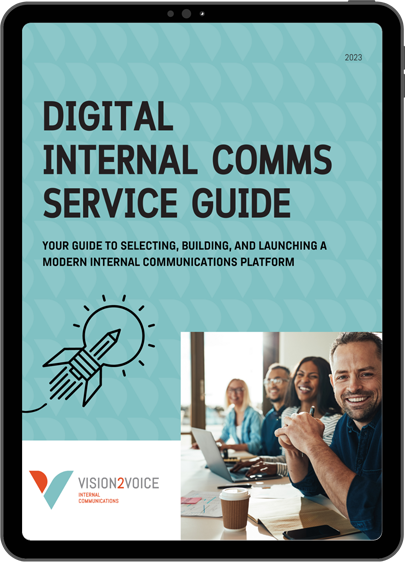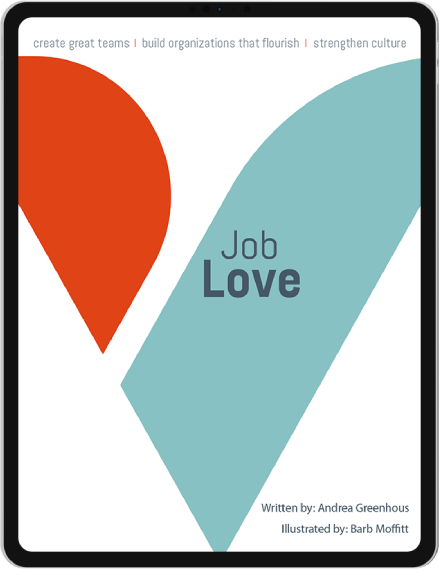
Forget the new normal. How about the new better?
For months now, we’ve been reading how COVID-19 has caused massive changes and disrupted decades-long habits and accepted practices around how work is done.
Many organizations have limited their thinking to simply trying to adapt to the “new normal.” We believe that companies that take this approach are missing a once in a lifetime opportunity – a chance to improve the workplace forever.
The pandemic has taught us some important lessons. We need to use these lessons as a springboard to create workplaces that are more human and take a people-first approach to the way we do business.
Pandemic Lesson #1 – We are all human
Whoever coined the term “business isn’t personal” never experienced a global pandemic.
WFH, Zoom, WFHWKAP (work from home with kids and pets), a pants-optional dress code – it’s a different world that has become the new imperative for many. Previously defined boundaries have blurred – there’s no longer “work-life” and “home life.” Now it’s just life.
Pandemic Lesson #2 – We are more adaptable than we thought
The stories are everywhere – things that the IT department (insert legal, human resources and other departments here) said were impossible, quickly became possible. Fear that working home would mean that everyone’s laundry would be the priority just didn’t happen and for most organizations, there were more benefits to remote work (including higher productivity) than previously imagined.
Pandemic Lessons #3a and #3b – Work is not a place and presence doesn’t mean productivity
For too long, managing people has been more about where they sit and for how long than results. Instead of trusting and empowering people they gave them a punch card and rewarded them for staying late. Exhaustion was a badge of honour.
The challenge now is to learn from these lessons. If we do, we not only create better workplace cultures, we also become better equipped to face more disruption, unnerving uncertainty, and daily dilemmas and risks with resilience and agility.
Reimagine. Rebuild. Better than Before
In an astonishingly short period of time, employers have had to make a significant shift in how they interact with their employees. And in many cases, that shift has brought about a steep learning curve that requires new skills and a new approach.
This moment presents an incredible opportunity for organizations to reimagine how work is done and rebuild organizational health. Reinforcing a culture of trust and psychological safety is not only paramount – it’s becoming table stakes.
How leaders show up at this moment will determine who is going to be successful.
It’s time for organizations to learn how to communicate with their people in a new way.
Let’s face it, not every organization is thinking about how they communicate with their employees. Get the message out there and the job is considered done. It’s a typical checklist approach that doesn’t consider some big factors, including who your audience is (what do they need?) and what you want them to know, feel, and do when they receive your communication.
It has never been more important for organizations to have a communications game plan, for the immediate, medium-term, and long-term. A strategy to consistently deliver clear, empathetic communications that keep people optimistic and focused, but also resilient and prepared for future changes.
Internal communication is a powerful and compelling tool.
An internal communications strategy provides the framework needed to learn, grow, and impact your employees in a way that is purposeful and kind, and ultimately, changes employee feelings and behaviours:
- From grief and loss to supported and understood
- From fear and uncertainty to confidence in the future
- From disconnected to purposeful and committed
- From helpless and frustrated to empowered and thriving
- From lonely and isolated to a sense of belonging
Here are four internal communication actions to take:
1. Put yourself in your employees’ shoes.
But first, learn what kind of shoes they’re wearing, and why.
It may seem obvious, but many organizations do not make a serious effort to understand the collective baseline, and then act on it. They avoid surveying their employees, claiming “survey fatigue,” and instead make assumptions or work from old data. We’re calling bullshit. It’s survey cynicism, which arises when employees repeatedly participate in surveys with no follow-up communication about resultant actions or outcomes.
Making the effort to understand your employees’ needs and feelings and then doing something worthwhile with that information establishes trust and gives people an opportunity to be part of the solution.
2. Help your leaders lead.
Employees are looking for direction in the fog. Leader communications that are clear, honest, and compassionate can light the path forward.
However, leaders with the best intentions can easily misstep with language that is perceived as tone-deaf, dismissive, or that contributes to speculation and further uncertainty.
Equip your leaders with the communication skills needed to inspire confidence in the path forward. Invest in the right training and tools. Their words and actions can help people feel safe and supported, adjust to changes, and less anxious by putting their experiences into context.
3. Connect people to something bigger.
Employees that have lost their focus are not able to deliver what your organization needs to survive and thrive. Sharing a common sense of purpose creates a sense of belonging, helps employees navigate rapid change, and gives them an opportunity to participate in solving business challenges.
Rally employees by embedding purpose into your communications – share stories, explain how employees can make a meaningful contribution, and link it back to your organization’s “why.”
4. Help employees build resilience.
Resilience is the ability to bounce back from a challenging situation. As the pandemic continues, bounded optimism, hope, and an environment of psychological safety will be important pieces of the resilience-building puzzle.
Speak candidly, acknowledge the loss, encourage open dialogue, and share positive stories. These are all communication strategies that can encourage a broader sense of community and create personal and collective resilience.
Changing the conversation can be a game-changer.
As businesses continue to navigate the realities and challenges of COVID-19, take a moment to reflect on how you are talking to your employees.
This new day requires a new way.
Choose to move with kindness, empathy, optimism, and hope. Choose to change the conversation. Choose to be better than before.






